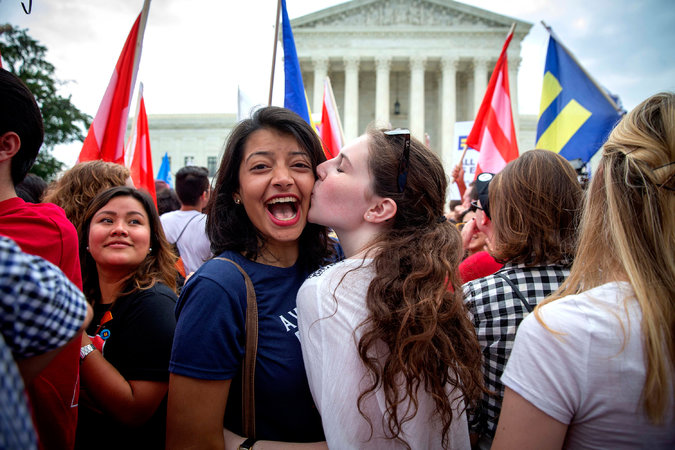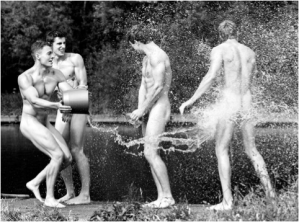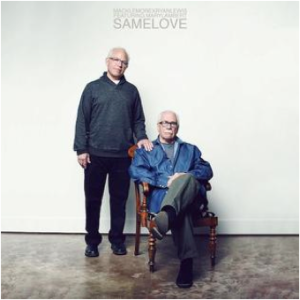by Angela Jones, PhD

 I have learned three things this week: there are a lot of clinical psychologists on socialmedia, biological determinism has made a comeback, and people are really scared of a queer planet.
I have learned three things this week: there are a lot of clinical psychologists on socialmedia, biological determinism has made a comeback, and people are really scared of a queer planet.
On the morning of Friday June 12th I logged onto Facebook and my news
feed was filled with stories about Rachel Dolezal, the black Spokane NAACP leader who had been “outed” as white (by her own parents). In the days that followed, I read everything I could about the case, and the more that I read the more frustrated I became. I understood the negative reactions; I too, was put off by the idea that she allegedly concocted stories about discrimination and even faked her own death threats, that she disowned her parents for their whiteness, made offensive comments about her fictitious Native American background, and so on. However, something is still missing from the accounts I have read; all of the moralizing about Dolezal’s story has obfuscated our ability to read and see the potential for queer futurity in this case. Her life seems like testimony to the potentiality of queer world making—that is—that people can and do craft subjectivities that bring them joy, and that disrupt hegemonic discourses in the process. I began wondering if there was another way to read this case. What if Dolezal was assigned white at birth but has become a black woman?
Much of what has been written about Rachel Dolezal has focused on speculation about her motivations for “passing” as a black woman. I will not make any comments about Rachel Dolezal’s mental health, because unlike the thousands of people on social media who have rushed to diagnose her with a range of mental disorders, I do not have a degree in clinical psychology, and have not had an opportunity to meet her. Moreover, given the long well documented history of medicalizing and pathologizing non-normative behavior, I see this particular discussion as particularly worrisome and unfruitful.
To my mind, her identification with blackness is not some type of white liberal savior politics gone overboard. I don’t read her behavior as some farce or scam so that she can sit with the cool black kids in the lunch room. I also don’t see this as the appropriation of black culture as usual. Dolezal is not Madonna appropriating Vogue from queer men of color. Dolezal is not celebrity X [fill in the blank] who on Halloween thinks it is hysterical to put on blackface. To be clear, I find the examples above incredibly offensive. However, I think reducing Dolezal’s identity to blackface is a mistake, and indicates a clear misreading of the history of minstrelsy and blackface in the US. Instead, what if Dolezal is claiming blackness not as a ruse to capitalize on “black culture”(whatever that is), but as her “truth?” By making a queer intervention into the current debate, I hope to open up a dialogue about how Dolezal’s queering of race demonstrates potentiality for queer futurity.
Queer Theory 101
Disclaimer: I cannot discuss queer theory in any meaningful way in a short paragraph, but here is my best effort to summarize its main contributions, and how those ideas will be used here. Queer theory has emphasized that categorical thinking—specifically, the binary construction of sex, gender, and sexuality are limited and not useful for understanding human beings because these systems ignore sexual variation (e.g. intersexuality), and the fluidity of gender identity and sexual desire (e.g. queer identified people). Moreover, the creation and use of such systems only erases, marginalizes, stigmatizes, and punishes those who do not neatly fit into those boxes. Genealogies of gender and sexuality conducted by social historians have shown us the ways in which these categories have been discursively produced and once institutionalized coercively regulate behavior and bodies. These poststructuralist genealogies of knowledge production have been important because they assist in the denaturalization of behavior. Finally, queer theory has challenged essentialism—that is—there is no biological, authentic, right, inherent, and/or normal way to be anything. All our ideas about appropriate behavior are socially constructed and are constantly in flux, and vary across time, culture, and space.
A queer analysis reveals that people’s reactions to the Dolezal case have been problematic in three main ways. First, the dominant response has reified and essentialized racial categories. In most news and social media accounts, people have said Dolezal is “pretending” to be black. This very notion essentializes blackness, and implies that there is an authentic way to be black, and that because she is white (an immutable fact) that she cannot be black. According to this popular response, Dolezal is merely a white woman in blackface with a bad perm and weaves. However, this response only reifies inaccurate biologically deterministic ideas about race. Crucially, this dominant reaction to Dolezal is actually antithetical to the goals of the black liberation movement. You cannot simultaneously challenge institutional racism, while reifying notions of racial purity.
Second, in addition to essentializing race, the dominant responses to Dolezal have also reductively essentialized ideas about privilege. People have asserted that because she was born white and middle class in Montana that Dolezal’s previous white middle class privilege thwarts her ability to “really” understand black experience. This logic assumes that whiteness=privilege and blackness=underprivileged. Privilege does not work like this; it is contextual, situational, and multifaceted. For example, I am middle class, black, polyqueer, aggressive femme, and Jewish. No doubt—my life has consisted of complex and multifaceted experiences of privilege and discrimination. People have both advantages and disadvantages due to their positions in multiple systems. Our intersectional identities are complex and tricky; an individual could receive privilege from their position in one system (e.g. race), but be disadvantaged because of their position in another overlapping system (e.g. gender). Then to muddy the water further, there are status systems and social hierarchies within each of these systems (e.g. colorism). Thus, in these mainstream stories about Dolezal, race and privilege are discussed in narrow, reductive, and essentializing ways.
Finally, the dominant reaction to Dolezal has also made assumptions about her motivations for passing. Some folks seem to have a problem with Dolezal because she has “co-opted” blackness, and has attempted to pass as black in order to gain access to political power in the black public sphere. Ostensibly, her deception has allowed her to illegitimately acquire a scholarship to Howard University, gain access to a position of leadership in the NAACP, and become an educator of Africana Studies. These awards and positions should have gone to “real” black people. However, this reading of Dolezal’s passing suggests her motivations were nefarious. Given her privileged background, her passing was not grounded in economic, political, and/or social necessity (as it was historically for black folk who engaged in passing). So, in this dominant reading Dolezal’s passing was calculated and used only to acquire institutional rewards and privileges that she did not deserve nor had any right to.
Passing has generally been treated as a survival tacit that is deployed by marginalized people to gain access to resources they need to survive, and to protect themselves from violence. Instead, I’d like to theorize around passing as a mechanism through which people realize self-actualization. Again, what if she is not pretending? She is not co-opting black culture, and black institutions, if she see hers self as a part of these institutions, and sees herself as black. To flippantly reduce her identification as black to mere delusion is a mistake. What if she is trying to find a subjectivity that is real to her? For her, maybe the only livable life is a black one.
Transracial, Transgender: A Note about Terminology
In the past week, the word transracial has been thrown around in news articles and hashtags. Its current use marks an important shift in the terms’ etymology. Previously this term has been used to refer to interracial families; specifically it has been used to describe transracial adoption. For example, Dolezal comes from a transracial family. Her adopted siblings are black, and her parents are white. Dolezal has two black sons. Interestingly, we have seen a shift in the way in which the word transracial is being used; so in addition to the terms use to describe interracial families, it is now also being defined as an umbrella term that encompasses many identities in which a persons’ assigned race at birth does not match their racial identity.
Second, in the past week we have also seen people conflating transgender and transracial identities. So, to be clear, I am not positing that transracial and transgender experiences are the same. To reductively conflate the terms transgender and transracial is both transphobic and racist. Yes, on some broad level people can share common experiences of oppression: exploitation, powerlessness, marginalization, cultural imperialism, and violence. And in the interest of praxis and political mobilization, we often form alliances, despite the complex differences we experience within these systems of oppression. However, gendered oppression and racial oppression are often manifested in very different ways, and experienced by people in very different ways. So, no, Caitlyn Jenner and Rachel Dolezal are not the same; folks, they are not even distant cousins, but the language and frameworks that we use to understand gender can be useful to analyze this high profile case of an individual who has become or now enacts a racial identity different from the one assigned to them at birth.
While transgender and transracial experiences are incredibly different, the logic that is being offered up to explain why transracial identities are not possible or are wrong, is the very same hateful language and logic used by some feminists to talk about transwomen. Janice Raymond wrote,
…the transesexually constructed lesbian-feminist is a man, and not a woman encumbered by the scars of patriarchy that are unique to a woman’s personal and social history that he can play our parts so convincingly and apparently better than we can play ourselves. However, in the final analysis, he can only play the part, although the part may at times seem as, or more, plausible than the real woman.
So, in the Dolezal case, unfortunately Raymond’s arguments have resurfaced. Dolezal cannot be a real black woman because she was born white. She can only pretend or play the part of a black woman. And because she was once a white privileged woman, she cannot transition into the racial identity that she may feel aligns with her soul. Isn’t it oppressive to deny people the right to become who they feel themselves to be?
Raymond famously and offensively compared transwomen to rapists,
…rape, of course, is a masculinist violation of bodily integrity. All transsexuals rape women’s bodies by reducing the real female form to an artifact, appropriating this body for themselves. However, the transsexually constructed lesbian-feminist violates women’s sexuality and spirit, as well. Rape, although it is usually done by force, can also be accomplished by deception. It is significant that in the case of the transsexually constructed lesbian-feminist, often he is able to gain entrance and a dominant position in women’s spaces because the women involved do not know he is transsexual and he just does not happen too mention it…Because transsexuals have lost their physical “members” does not mean that they have lost their ability to penetrate women—women’s minds, women’s space, women’s sexuality.
Alas, is this not the same logic we see cropping up in the Dolezal case? Dolezal is not a real black woman. She previously lived a life a racial and class privilege; she did not grow up living an “authentic” black life. According to this logic, Dolezal is deceptively passing as black to rape the black community.
The current policing of Dolezal’s body bears a striking resemblance to how some feminists policed transwomen’s bodies. So similarly, Dolezal is not a real black woman and should be shunned from black political circles; but why, for living stealth? If Dolezal finds hurt and pain in her white past, why is she morally obligated to discuss that past? News accounts suggest that her past may have been one of trauma and abuse inflicted by her white conservative parents. Why is it a surprise that she would not want to discuss such a past or even lie about it? If she understands herself to be a black woman, why would she discuss her assigned race? If she identifies as black because it fills her soul with joy, and helps her achieve self-actualization, and has also used her position as a black political figure to fight racial injustice, why the backlash? The backlash is because people are afraid of a queer planet. Subjectivities are ours to craft, and while it is arduous to escape the hegemonic discursive power regimes that imprison our bodies, it is an exercise of agency, empowerment, and queerness to challenge such discursive power regimes. Her choice to fulfill her own racial destiny is her choice, not ours.
Bringing in the Body
In my gender theory course, my students and I always discuss Transmorgfication (a la Nikki Sullivan and Victoria Pitts-Taylor among others). One of things I love most about these discussions is how my students are quick to debate the socially constructed systems we craft to evaluate the ways in which people craft subjectivities using transmorgfication. Nikki Sullivan defines transmogrification as,
strange or grotesque transformation: transformation that is characterized by distortion, exaggeration, extravagance, and as the Short Oxford English Dictionary puts it, ‘unnatural combinations.’…I will raise the question of what such bodies do, how they function, what effects they produce, what connections they make with other bodies and with particular bodies of knowledge, why, and to what ends.
It is this line of queer reasoning that I would like to explore as well. Dolezal’s aesthetic choices are part of an individualized attempt to transmogrify her body into one that will allow her to be recognized and read as black. Now, instead of seeing this as a nefarious plot to co-opt black politics and black culture, what if her transmorgofication is performed as part of a highly complex ongoing process of self-actualization?
People’s reactions to Dolezals’ body are buttressed by what Victoria Pitts-Taylor has called mutilation discourse. Dolezal has mutilated her body and defied the natural creation of her body. Dolezal’s case is certainly not the only example of people trying to alter their race and being met with scathing critique for mutilating their natural skin. There is a small yet amazing body of literature on skin lightening in Jamaica. For example, Christopher Charles and Donna Hope have both written that while many people are quick to argue that skin lightening is a reflection of self-hate, and internalized white supremacy—this culturally specific form of transmorgfication is not this simple. Moreover, it is imperative to acknowledge that experimentation with transracial transmorgifcation is not one-sided. While Dolezal has worked to accomplish blackness, there is also a historical record of black people working toward achieving whiteness. However, because people hold biological notions of race, most people will react to tampering with phenotype, particularly skin tone as grotesque pathological behavior.
Dolezal has created a body that people find grotesque, not so much because of her body’s aesthetic value, but because her body disrupts the perceived biological certainty of race. Her body is transgressive, because she has disrupted biologically essentialist ideas about race, and thrown into chaos people’s ideas of racial authenticity.
Rachel Dolezal’s body is queer. Her identity shows us quite clearly that race is complex and much like gender and sexuality—it is messy, and it is fluid. Instead of running from that reality, I hope to see more dialogue about how her life and her choices queer our understating of race.
The Queer Potentiality of Transracial Identities
This article was not meant as a defense of Rachel Dolezal, and was not meant to weigh in on her personal choices—we have enough moralistic diatribes about this. Instead I see this high profile case an opportunity to open up a dialogue about queering race, much in the same way we have about gender. I think a queer reading of this case and not an evaluation of Dolezal herself is the way we must move forward.
In trying to queer the Dolezal debate, I’d like to pose the following questions, and hope that these questions can help shape the debates currently unfolding:
1) Is it possible that Dolezal was assigned white at birth, and has over the past decade become a black woman?
2) Can a person transition to another race?
3) If a person transitions their race, should their decision to remain stealth be evaluated and rendered deceptive?
4) What are transracial identities, and in what ways do transracial identities contribute to queer politics and queer futurity?
If we relinquish our fetters to biological determinism, the answers to these questions are no longer so simple, but are certainly worthy of discussion, particularly for those of us fatiguing from the liberal mainstream response to Dolezal.
It also seems to me that the Rachel Dolezal case has made visible hypocrisy in liberal progressive politics. Many people celebrate gender and sexual subversion, but try to apply a queer logic to race, and people freak out. These poststructural cherry pickers tell us that essentializing socially constructed categories such as gender and sexuality are problematic, but when applied to race, it is somehow different—but why? I have yet to hear one logical response to this question.
Finally, people have said that Dolezal has been a distraction from the black liberation
movement, specifically from blacklivesmatter, but queering race works toward destabilizing the very discourses that maintain white supremacy. With this said, I will always personally remain committed to various forms of political action and grass roots activism, but I also see the potential for queer futurity in the Dolezal case. In the past week the Dolezal scandal has pushed discourse; we have seen an explosion of writing that has aimed to bring the idea or possibility of transracial identities to the mainstream, and if discursively pushed far enough, has the potential to legitimate such an identity. And I see this as an exercise in what José Esteban Muñoz called queer world making and signals the potentiality of queer futurity. All of the discourse that has emerged presents a unique opportunity for those invested in queer politics. We must queerly push this conversation—that is—in ways that interrogate and challenge socially constructed ideas about what it means to be real, normal, and natural. To do so, to queer our ideas about race, may just show us what could be waiting on the horizon.
As I was finishing edits on this piece, Dolezal made a public declaration saying that she did identify as black, and that her performances were certainly not blackface. And so I will end with her words, “the discussion is really about what it is to be human…and I hope that that really can drive at the core of definitions of race, ethnicity, culture, self-determination, personal agency and, ultimately, empowerment.” Me too, Rachel, me too!
Angela Jones is an Assistant Professor of Sociology at Farmingdale State College, State University of New York. Jones obtained her PhD from the New School for Social Research. Her research interests include: African American history, gender, sexuality, and social movements. Jones is the author of three books African American Civil Rights: Early Activism and the Niagara Movement (Praeger, 2011), The Modern African American Political Thought Reader: From David Walker to Barack Obama(Routledge, 2012), and A Critical Inquiry into Queer Utopias (Palgrave, 2013). She can be reached at jonesa@farmingdale.edu.








 Even a feminist/queer critic of marriage (me, alas) can’t help but be moved by today’s decision by the Supreme Court that finally makes marriage equality the law of the land. And coming as this does the day after the Supremes ruled for the Affordable Care Act, putting to rest the Republican obsession with denying Americans health care coverage, all people of good faith (or even simple common sense) should be celebrating. But after the champagne corks are popped and the tears of victory dry, it may be time (long overdue, in my estimation) for the LGBT movement to pivot and recalibrate. The push for marriage rights as signifying all things gay and all things “equal” has taken up too much bandwidth and sucked the air out of the potentially more capacious room of queer world-making.
Even a feminist/queer critic of marriage (me, alas) can’t help but be moved by today’s decision by the Supreme Court that finally makes marriage equality the law of the land. And coming as this does the day after the Supremes ruled for the Affordable Care Act, putting to rest the Republican obsession with denying Americans health care coverage, all people of good faith (or even simple common sense) should be celebrating. But after the champagne corks are popped and the tears of victory dry, it may be time (long overdue, in my estimation) for the LGBT movement to pivot and recalibrate. The push for marriage rights as signifying all things gay and all things “equal” has taken up too much bandwidth and sucked the air out of the potentially more capacious room of queer world-making.
 I have learned three things this week: there are a lot of clinical psychologists on socialmedia, biological determinism has made a comeback, and people are really scared of a queer planet.
I have learned three things this week: there are a lot of clinical psychologists on socialmedia, biological determinism has made a comeback, and people are really scared of a queer planet.










